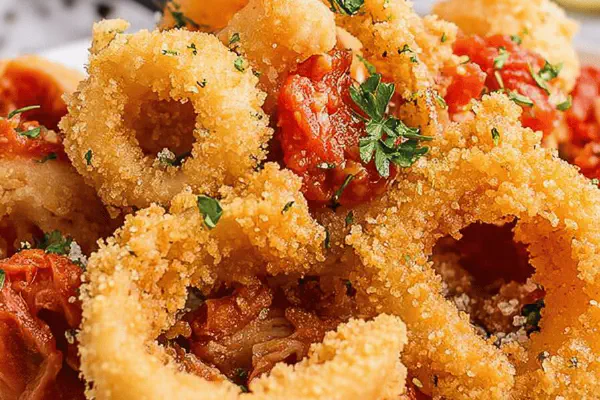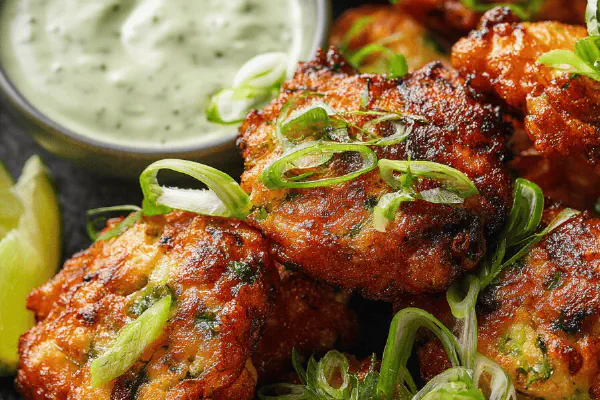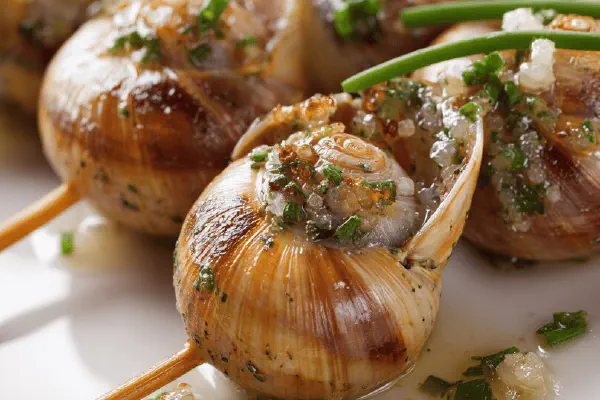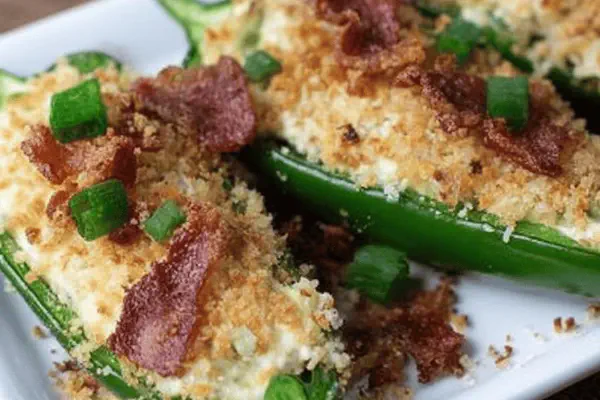Holiday Deviled Eggs Trio
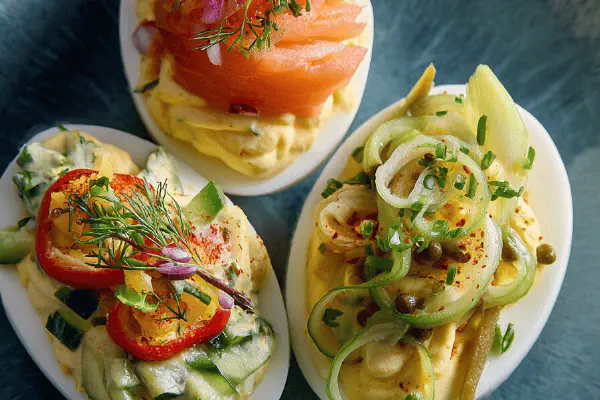
E
By Emma
Certified Culinary Professional
•
Recipe tested & approved
Three styles of deviled eggs with smoky, spicy, and creamy twists suitable for a festive spread. Using steaming for precise yolk texture. Includes substitutions for common allergens and pantry swaps. Emphasis on tactile and visual cues instead of strict timing, plus assembly tips to avoid soggy whites or overmixing. Combines delicate smoked salmon roses, bright cucumber-ginger crunch, and a tangy herbaceous celery salad. Experimented with wasabi oil infusion and yogurt balance for freshness. Fine-tuning acidity and texture. No em dashes, careful with seasoning. A practical yet elegant appetizer to elevate any holiday table.
Prep:
25 min
Cook:
15 min
Total:
40 min
Servings:
4 servings
#appetizer
#holiday
#French-Canadian fusion
#eggs
#seafood
#snack
#easy prep
Steaming eggs is a slight game changer, not your standard boil fuss. Make sure the whites are firm but tender, yolks creamy with that hint of jammy texture. Three fillings, each with its own vibe: silky whipped cream with horseradish and salmon that smells like the sea in winter; sharp wasabi-mayo punch with the crisp freshness of cucumber and tangy ginger pink as a blush. Then the classic egg salad with crunch from the celery, a touch of sweet sharpness, fresh herbs. No soggy whites allowed. Assembly is guest-driven—keeps textures fresh, or else you lose that snap. The trick is balance; mix too much horseradish, you lose subtle. Wasabi easy to overshoot. Learned this after a kitchen rave disaster. Adjust acid, fat, salt—not just blindly follow times. Egg steaming took patience but zero cracks this time, peeling a breeze. Good eggs are the foundation; ends ugly if eggs dull or too dry.
Ingredients
- 1 dozen large eggs
Eggs like a blini
- 50 ml heavy cream 35 percent, lightly whipped
- 5 ml prepared horseradish
- 40 g thin smoked salmon strips, rolled into small rosettes
- 20 ml mullet roe
- 25 ml roughly chopped fresh dill
Eggs like sushi
- 40 ml mayonnaise
- 5 ml prepared wasabi paste
- 1 ml toasted sesame oil
- 1 Lebanese cucumber, thinly sliced into half moons
- 25 ml pink pickled ginger
- 20 ml black or white sesame seeds
Eggs like egg sandwich
- 3 small celery stalks, diced small
- 10 ml olive oil
- 7 ml white wine vinegar
- 8 ml finely diced tart pickles
- 2.5 ml chopped fresh tarragon
- 25 ml plain yogurt
- 10 ml mayonnaise
- 3 ml whole grain mustard
- 2.5 ml sugar
About the ingredients
I upped cream in the horseradish filling for a silkier mouthfeel—felt 3 tablespoons would be flat against smoked salmon’s intensity, something closer to 55 ml feels rounder in richness. Horseradish kept low; fresh was tricky to source so went with jarred prepared—same sharp prick but smoother. Replaced some salmon with trout once for a slightly less salt and smoky profile, interesting. Sesame oil toasted strong—don’t skip or it kills the delicate balance of the sushi mix. Used Arabic yogurt (plain whole milk) to keep tang without bitterness. Celery stalks diced smaller than traditional egg salad to avoid big bites that drown eggs. Vinegar on the mild side; sherry vinegar can replace white wine vinegar for more aromatic note. Sugar must be subtle here, just enough to tame acidity. No nuts, no gluten, safe for most. Changes keep flavors bright, not weighed down. Keep cucumber paper-thin for crispness; thicker means watery mess. Fresh dill and tarragon essential acids; dry herbs don’t pop the same. Mullet roe for that little burst, can swap with salmon roe or caviar for a luxe touch.
Method
- Start by steaming eggs, not boiling. Place a steaming rack or folding steamer insert at bottom of large pot. Add water to just reach base of rack. Cover and bring to vigorous boil.
- Gently lower eggs onto rack using a spoon; cover immediately. Steam 7 minutes for tender whites, slightly runny yolks. 9–11 minutes for firmer yolks, adjust ±1 minute based on your steamer's heat and egg size. Visual check: whites firm but not rubbery, yolks surface turning matte and set but still creamy.
- Transfer eggs into an ice water bath immediately to halt cooking. Let chill 20 minutes or until eggs feel cold to touch. This stops overcooking and makes peeling easier. Peel carefully under running water if stubborn. Use thumb to gently crack shell all over, then peel, or tap on countertop hard to loosen shell but avoid breaking whites.
- Cut eggs in half lengthwise just before serving. Dry the cut edges with paper towel to avoid watery filling.
Eggs like a blini
- Whip cream until soft peaks form — not too stiff or your filling turns gluey. Stir horseradish into cream; season lightly with salt; horseradish packs heat and moisture—balance is key. On serving tray, arrange egg halves, smoked salmon rosettes, dill, mullet roe. Provide spoonfuls of horseradish cream alongside. Encourage guests to build their own bites to keep whites firm and salmon rosiny fresh.
Eggs like sushi
- Mix mayonnaise, wasabi, and sesame oil into a smooth emulsion. Taste for heat; wasabi can overpower fast, add gradually. On serving platter put cucumber slices, pickled ginger, sesame seeds, and egg halves so people can assemble crunchy, spicy bites. The crunch of cucumber cuts richness; ginger sharpness resets the palate between bites.
Eggs like egg sandwich
- In a bowl combine diced celery, olive oil, vinegar, pickles, tarragon. Salt and pepper lightly. The acid brightens celery’s crunch. In a separate bowl, blend yogurt, mayonnaise, mustard, and sugar to balance tang and sweetness. Place both mixtures next to halved eggs so guests layer celery mix then sauce, mimicking classic egg salad texture but fresher and less dense.
- Serve immediately after assembly for best texture. If making ahead, keep components separate and unassembled to avoid moisture soaking whites.
- Use egg steaming technique learned here for other hard-boiled projects—steam yields less cracked whites, better peeling, and creamy yolks with gentle heat.
- Substitutions: Heavy cream can be crème fraîche or sour cream for blini mix; wasabi paste replaced by horseradish with a dash of soy for sushi mix if unavailable; Greek yogurt OK for yogurt base; dill swap with chives or tarragon if you want herbal variation; smoked trout can replace salmon for a different smoky note.
- Common pitfalls: Overcooked eggs gritty yolk, waterlogged whites from resting too long peeled in moisture, overpowering horseradish or wasabi dulling delicate eggs. Always taste your fillings separately and adjust seasoning.
- Efficiency tricks: Steam all eggs at once; prep fillings while eggs cook and cool; keep cold so assembly is quick; guests love interactive plating, layer presentation in serving vessels for elegant but casual touch.
Cooking tips
Steaming eggs is all about control: water mustn’t touch eggs, steam only. I learned 7 minutes gets yolks tender but not runny—a little finger to poke whites to confirm firmness helps. Longer cooking 10-12 minutes yields firmer yolks but avoid 15+ lest dry or green ring. After steaming, baby the eggs into an ice bath fast so don’t carry heat over. Peeling is easiest under running water to get under the membrane. For assembling, always dry whites after halving—moisture leads to sogginess and sloppy bites. Horseradish cream: fold gently, no heavy beating; want airy texture, not heavy fat globules. Wasabi mayo needs taste-testing; adding toasted sesame oil last, mixing gently to keep aroma intact. The egg sandwich fillings prepared separately prevents soggy whites, which often kills texture. Encourage DIY at table keeps freshness. Salt is vital but add sparingly in each filling; eggs are already salty. Reheating is a no-go except for steaming eggs; fillings assemble at room temp or chilled. Leftovers best eaten day one, eggs pick dry fast. Making three distinct fillings demands taste balance; avoid overwhelming smoky or pungent tastes with big doses. Salt after you taste in cold fillings to avoid flatness. A seasoned cook’s finesse here is in feeling, learning textures from touch and sight so the eggs sing on the first bite.
Chef's notes
- 💡 Steam eggs not boil; water just touches base of rack. Steam 7 min soft whites firm, 9-11 for firmer yolk. Use visual cues; yolk matte not shiny, white sets but tender. No timer obsession here.
- 💡 Peeling under running water helps membrane slip. Crack gently all over. If stubborn, tap harder but avoid breaking whites. Ice bath instantly cools, stops cooking, eases peeling. Don’t skip or end up overcooked dry yolks.
- 💡 Dry cut egg edges before filling or soggy mess happens. Moisture kills bite texture fast. Assembly rounded halves on plate separate fillings keeps fresh layers. Guests build bites, no soggy whites or gluey fillings.
- 💡 Horseradish cream whipped to soft peak; avoid heavy whipping or turns gluey. Add horseradish lightly; heat packs punch but too much dulls subtle layers. Salmon must be thin, rolled rosettes keep elegant visual.
- 💡 In sushi mix, add wasabi gradually; it smacks hard fast. Toasted sesame oil last, fold gently. Keep cucumber thin for crunch, thick slices water down mix. Crisp veggies reboot palate between spicy bites.
Common questions
How long to steam eggs exactly?
Seven for tender whites soft yolks. Nine to eleven firmer yolks. Check whites firm, yolks matte surface. Avoid 15 or more minutes or yolk dry green.
Can I swap smoked salmon?
Trout works fine; less salty smoky. Salmon roe or caviar for mullet roe swap. Horseradish cream can use crème fraîche or sour cream instead heavy cream.
Why are my egg whites watery under filling?
Filling moisture seeps if whites wet. Dry edges thoroughly. Assemble close to serving so no soak. Separate components if make ahead.
How to store leftovers?
Fillings keep in airtight separate containers fridge day one only. Eggs peeled best fresh. Reassemble just before serving. Avoid microwaving eggs or fillings.
